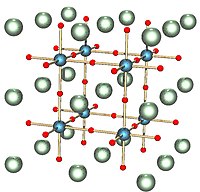
Photo from wikipedia
Evidences of crime are often disposed in waterways to destroy all ties to the crime. Nonetheless, these evidences are not inevitably lost as the water insoluble lipid components may remain… Click to show full abstract
Evidences of crime are often disposed in waterways to destroy all ties to the crime. Nonetheless, these evidences are not inevitably lost as the water insoluble lipid components may remain on the object. Currently, Small Particle Reagent (SPR) is used for visualizing such wet fingerprints and it comprises of several chemicals that are relatively hazardous to the crime investigator and the environment. The adaptation of a greener nano-biotechnological route might be useful, but there is still much to be done to improve this fingerprint visualisation method. Henceforth, this study was carried out to optimise the visualization protocol for CRL-MWCNTs/GA/I3K/SAF on split natural fingerprints immersed in purified tap water for one-and 15 days using response surface methodology (RSM). The addition of I3K as the mordant expedited the overall staining process. This study achieved a better mean fingerprints quality for the one-day immersed samples fared better compared to 15 days, thus suggesting the adequate use of CRL in the formulation. Hence, it was shown that RSM is reliable in predicting the optimum condition that yielded the highest mean fingerprint quality for both time intervals (one and 15 days).
Journal Title: Chemical Papers
Year Published: 2020
Link to full text (if available)
Share on Social Media: Sign Up to like & get
recommendations!